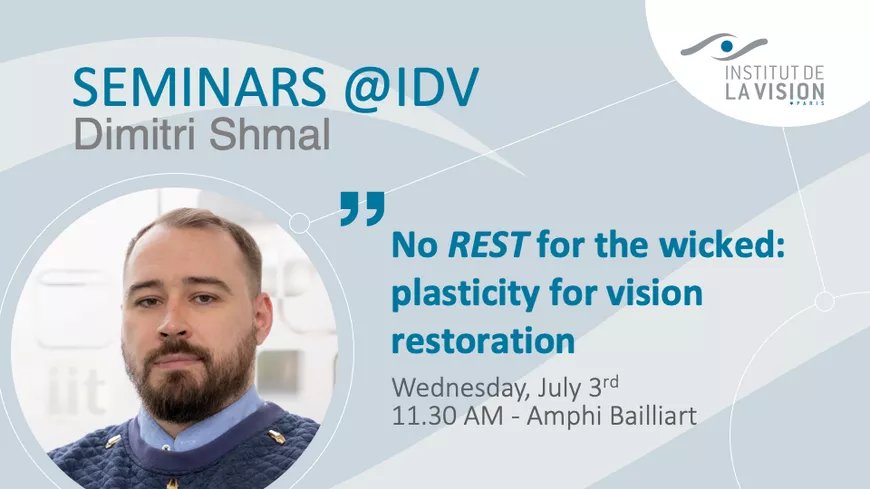No REST for the wicked: plasticity for vision restoration
Invited by Serge Picaud, PhD Dmytri Shmal (Italian Institute of Technology, Center for Synaptic Neuroscience and Technology, Genova, Italy),, will speak on Wednesday July 3rd at 11am, in the Amphithéâtre Bailliart, 3rd floor of the Hôpital national des 15-20.

Repressor Element 1-Silencing Transcription Factor (REST) regulates the expression of a wide array of neuronal genes implicated in differentiation, development and plasticity. We demonstrate the effect of REST inhibition on primary visual cortex (V1) plasticity in the adult mouse.
Employing the monocular deprivation paradigm and experimentally-induced amblyopia in a RESTGTi conditional knockout (cKO) model, we studied the effects of stereotaxically delivering Cre recombinase into V1 via adeno-associated virus vectors (AAVs) on visual cortex plasticity in vivo. To this end, we recorded visual evoked potentials (VEPs) with chronic multi-electrode implants in the awake animal, vision-correlated behavior via the optomotor response (OMR) and molecular changes in ex vivo brain tissue with immunofluorescence and RT-PCR. We are currently investigating the differential involvement of astrocytes and neurons using specific viral expression promoters (GFAP, hSynI and CaMKII).
Electrophysiology shows that REST cKO in the V1 of adult mice enables a shift of ocular dominance after short-term monocular deprivation and promotes vision recovery in a model of amblyopia, mirrored by a variation of OMR score. RT-PCR and immunofluorescence demonstrate a concurrent increase in the expression of plasticity-related REST target genes and marked reduction of perineuronal net density.
Inhibition of REST activity in vivo can reactivate plasticity in the adult visual cortex after the end of the critical period, paving the way for new therapeutic strategies for the correction of amblyopia and synergistic enhancement of retinal prosthetic function in cases of inherited blindness.
About Dimitri Shmal
Dimitri Shmal is a postdoc at Prof. Fabio Benfenati’s lab in IIT/San Martino Hospital in Genoa, Italy. He graduated from the Medical School of the University of Genova in 2017 with a thesis titled “Photovoltaic Polymer-based Subretinal Implants for the Treatment of Photoreceptor Degeneration”, collaborating on the testing of a photovoltaic retinal prosthesis published on Nature Materials the same year, but more importantly netting him a deep interest in interfacing novel technologies with neural circuits for translational and basic research purposes. This led him to pursue a PhD in Neuroscience and Brain Technologies under the supervision of Prof. Fabio Benfenati at the Italian Institute of Technology, where he also segued into working on in vivo applications of nanoscale organic photovoltaics in degenerative retinopathies, and azobenzene-based membrane photoswitch molecules aimed at modulating neuronal firing. His doctoral work mainly focused on the reactivation of visual cortex plasticity through the modulation of the large-scale transcriptional repressor REST/NRSF employing Cre recombinase. He is currently focused on elucidating the circuitry responsible for this plastogenic effect by way of cell-specific promoters, and testing on-demand control of REST inhibition via optogenetic and chemo-optogenetic means.
